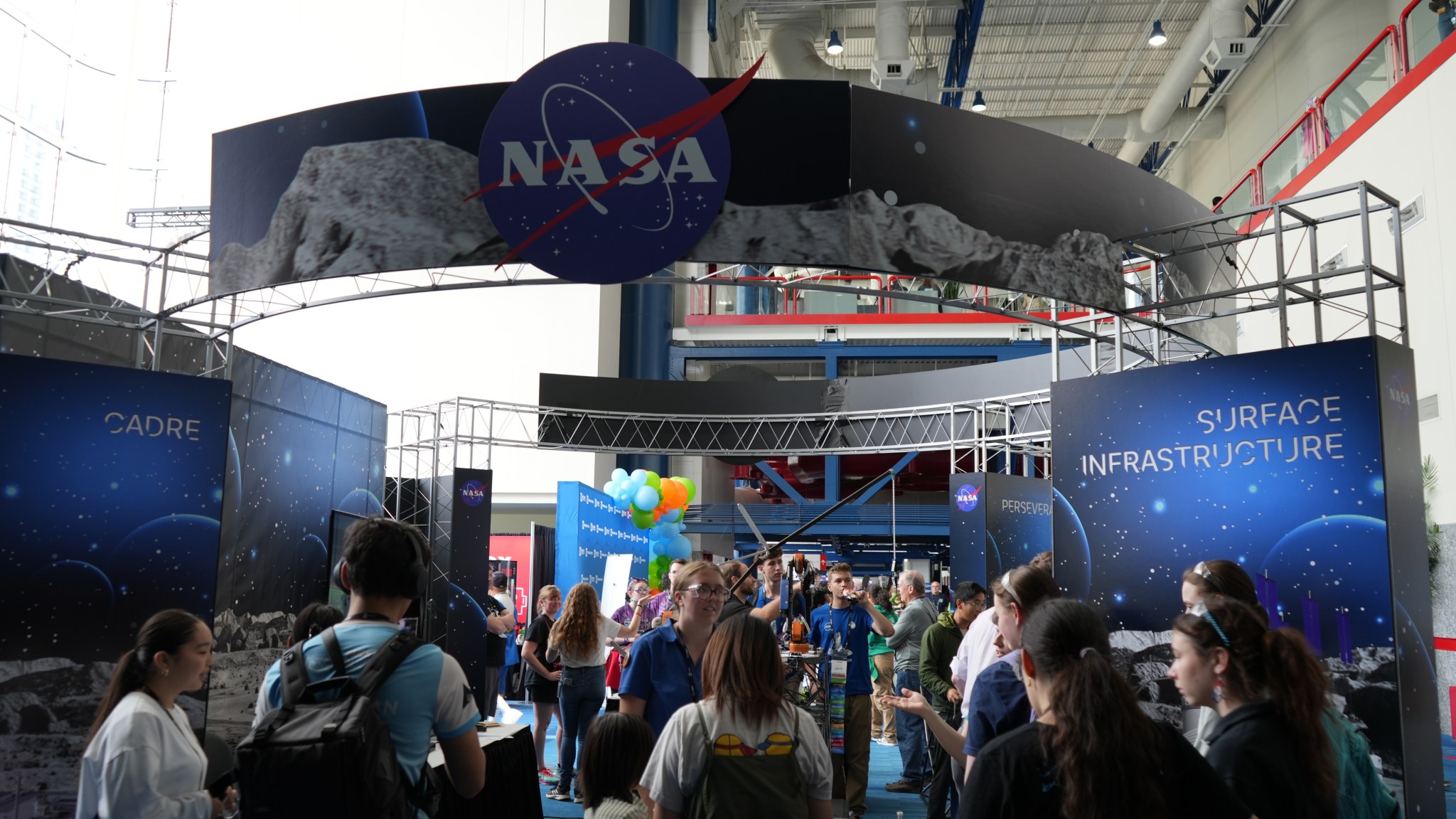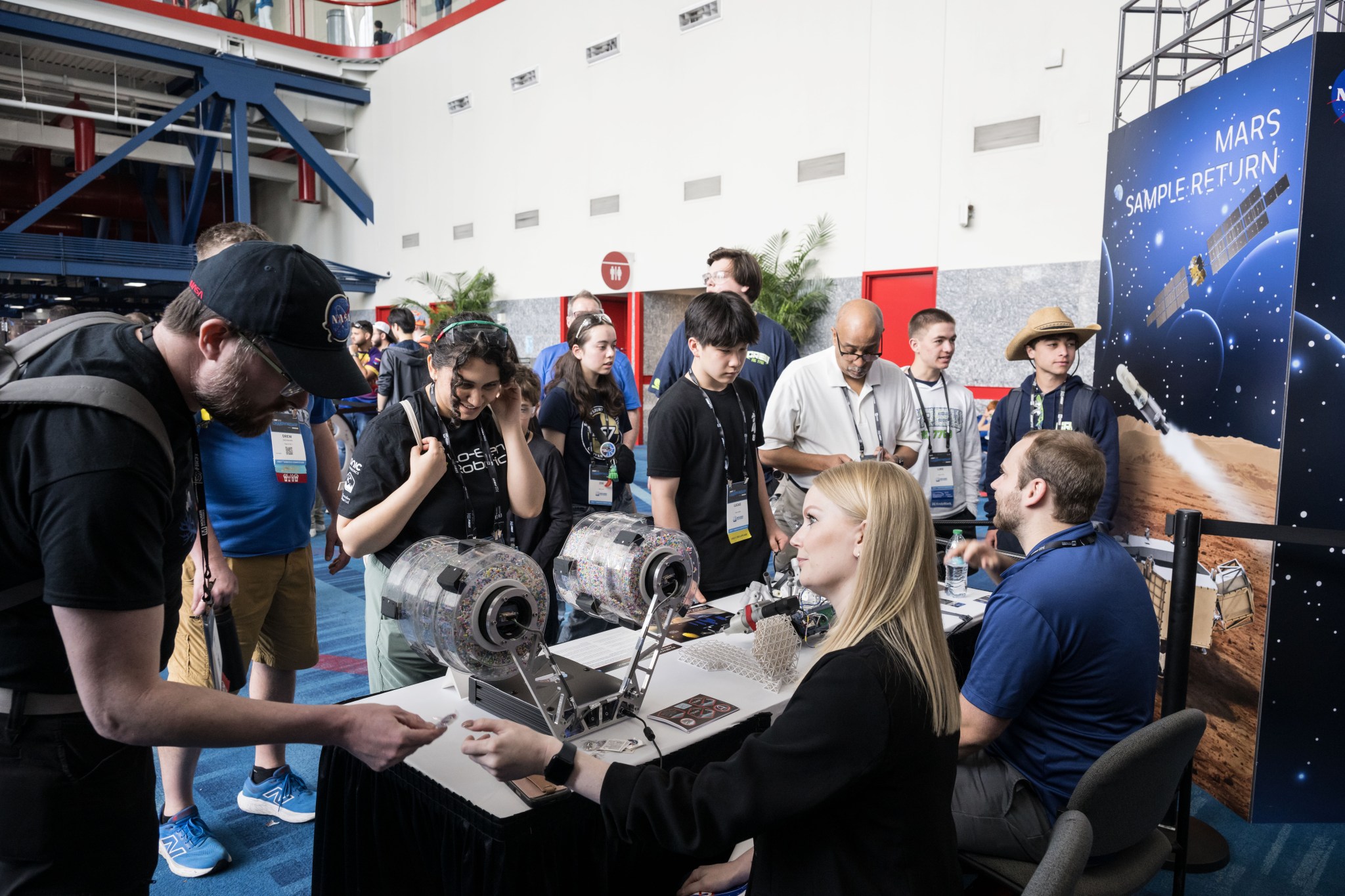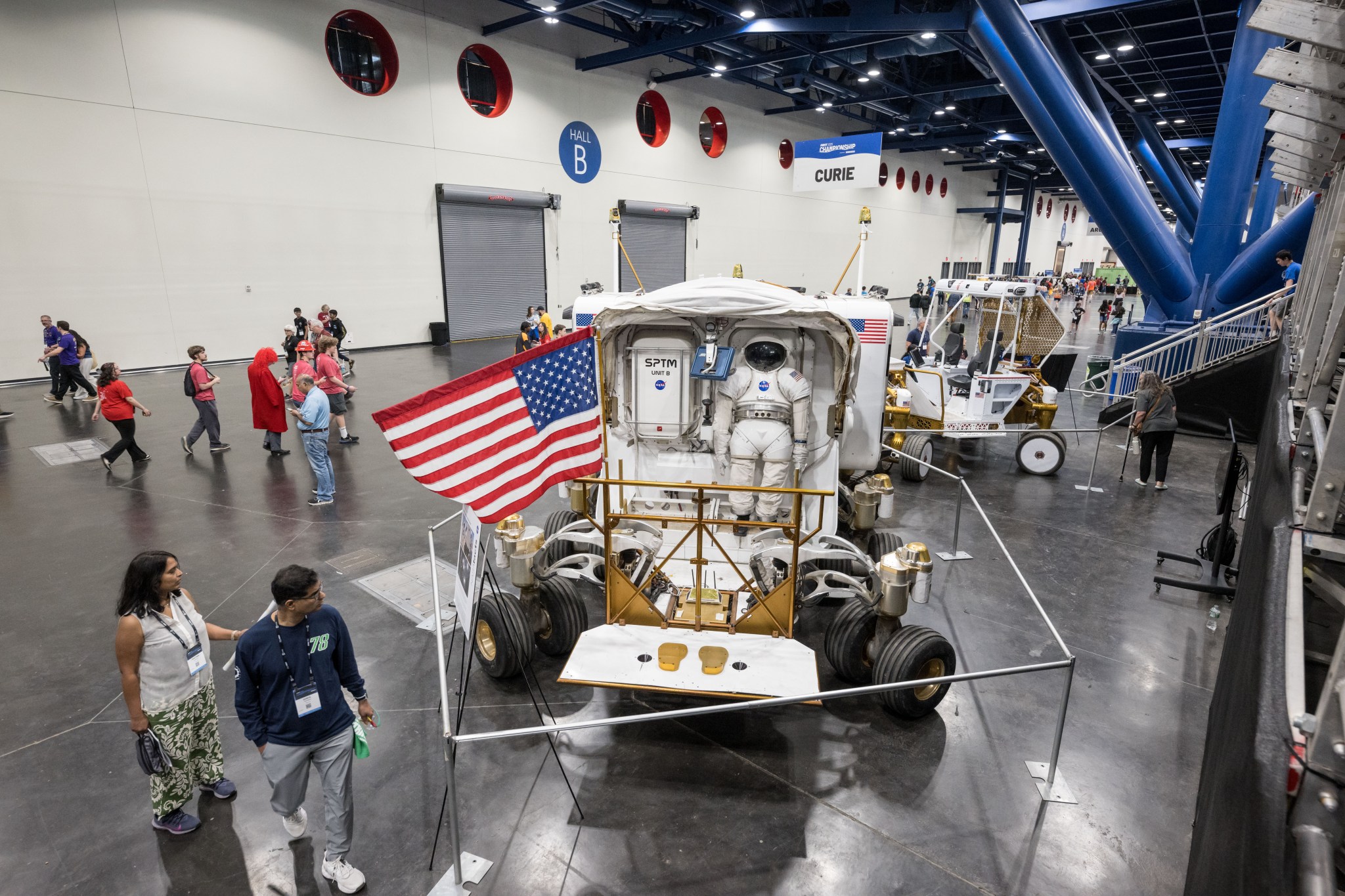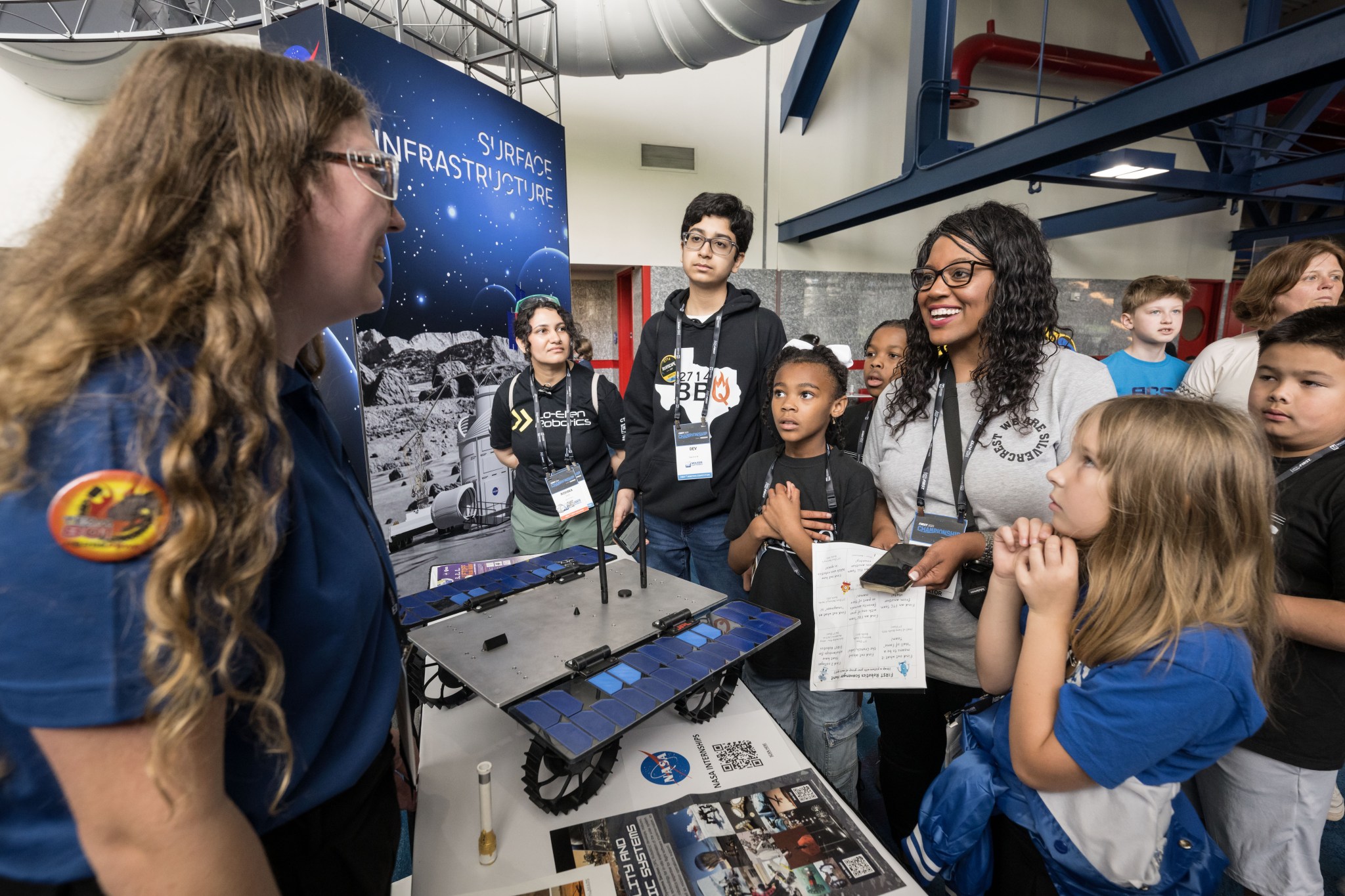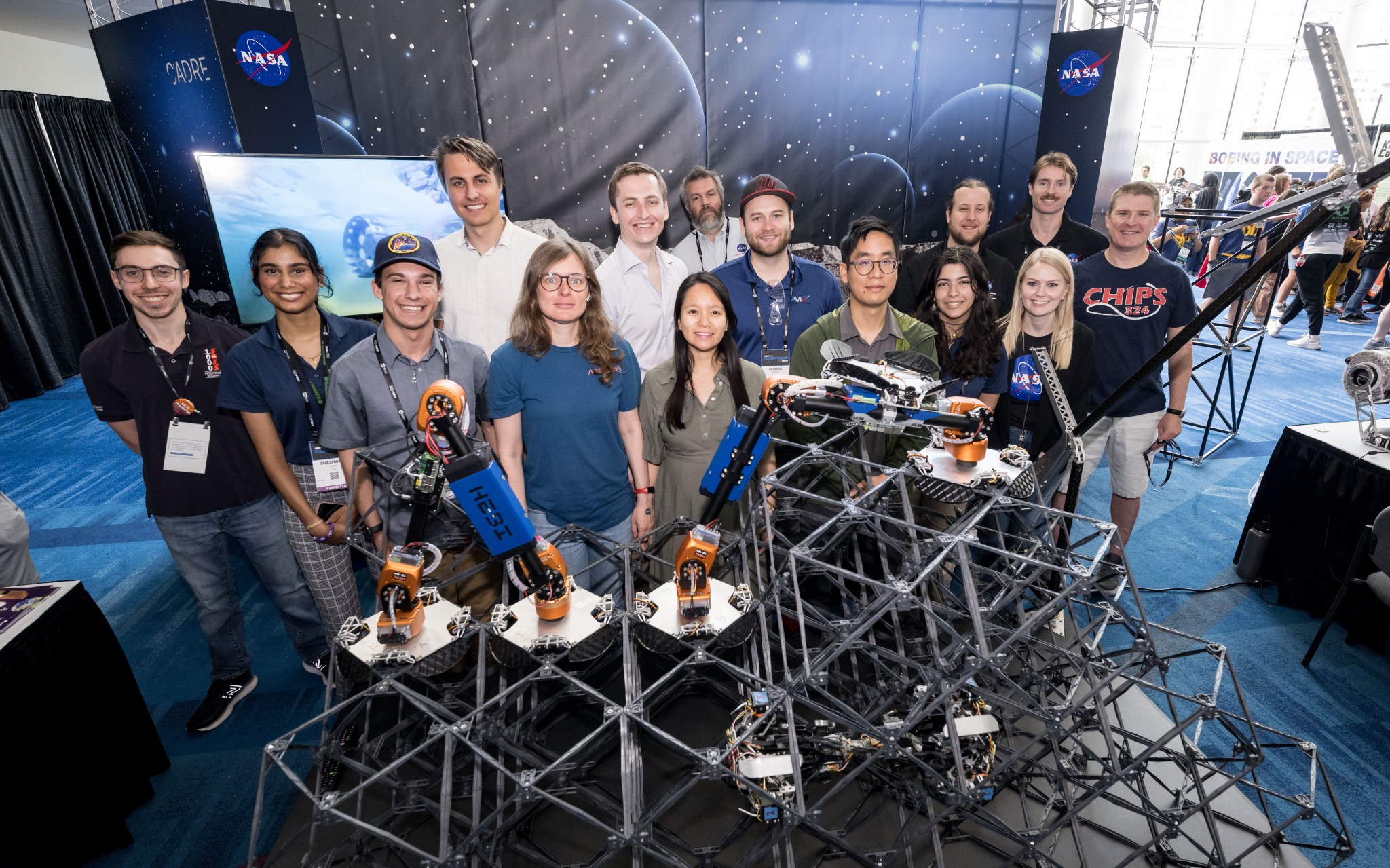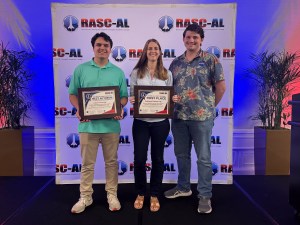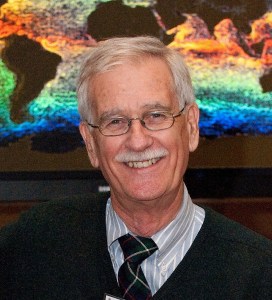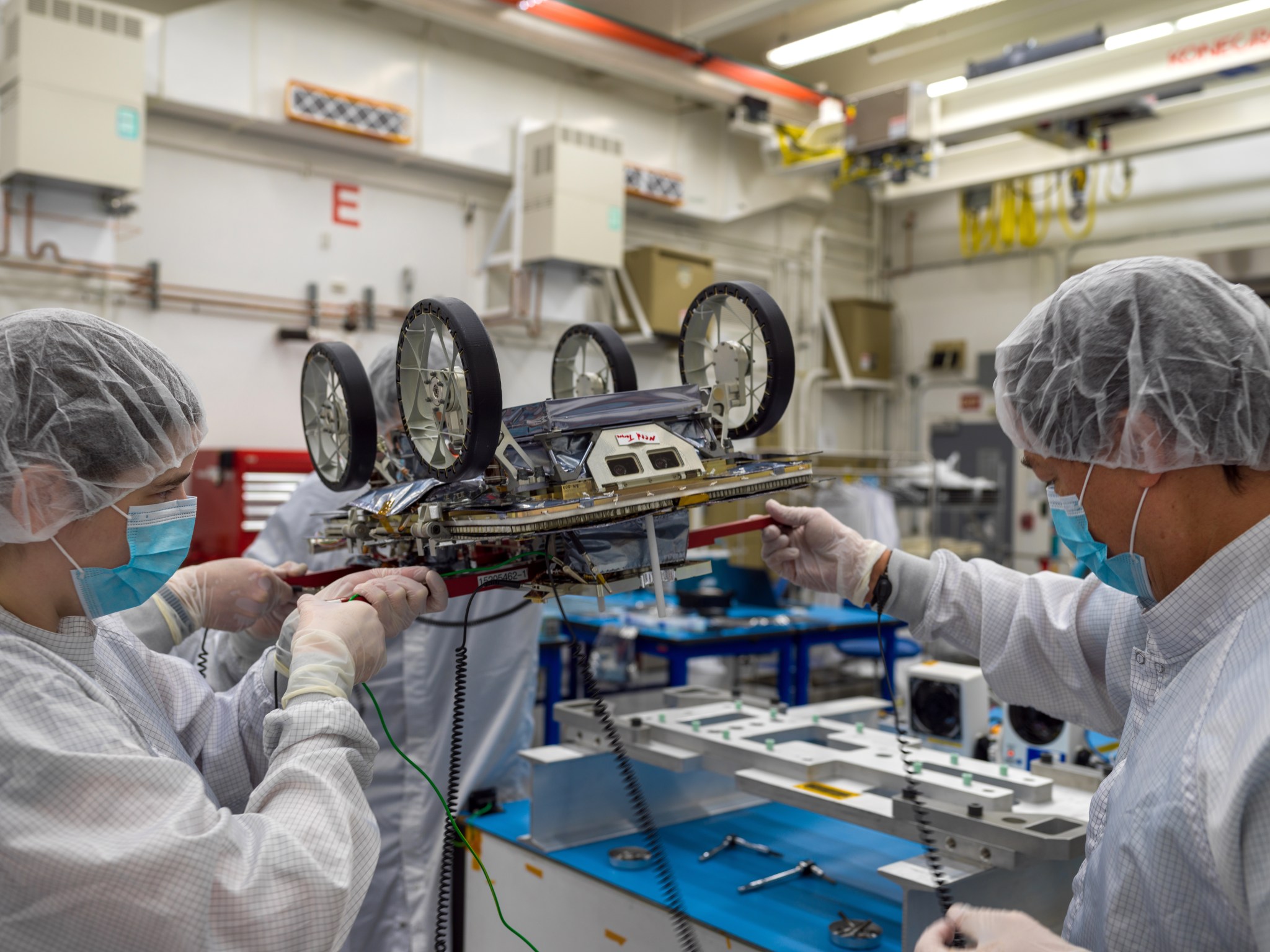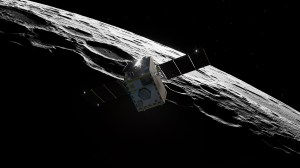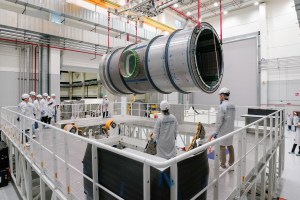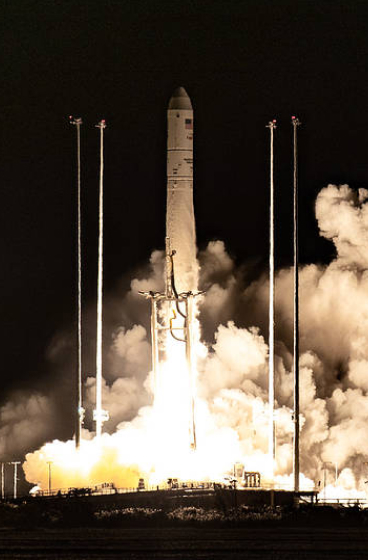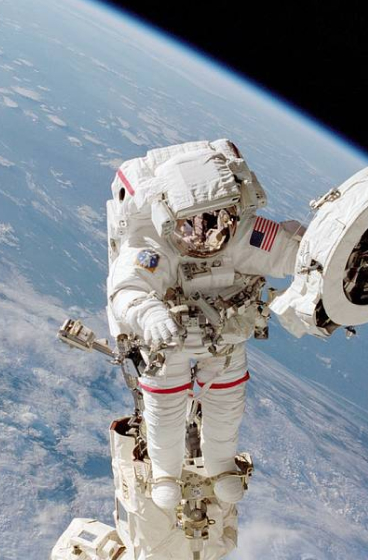Robots, Rovers, and Regolith: NASA Brings Exploration to FIRST Robotics 2025
What does the future of space exploration look like? At the 2025 FIRST Robotics World Championship in Houston, NASA gave student robotics teams and industry leaders a first-hand look—complete with lunar rovers, robotic arms, and real conversations about shaping the next era of discovery.
NASA engaged directly with the Artemis Generation, connecting with more than 55,000 students and 75,000 parents and mentors. Through interactive exhibits and discussions, students explored the agency’s robotic technologies, learned about STEM career paths and internships, and gained insight into NASA’s bold vision for the future. Many expressed interest in internships—and dreams of one day contributing to NASA’s missions to explore the unknown for the benefit of all humanity.
Multiple NASA centers participated in the event, including Johnson Space Center in Houston; Jet Propulsion Laboratory in Southern California; Kennedy Space Center in Florida; Langley Research Center in Virginia; Ames Research Center in California; Michoud Assembly Facility in New Orleans; Armstrong Flight Research Center in Edwards, California; Glenn Research Center in Cleveland; Goddard Space Flight Center in Greenbelt, Maryland; and the Katherine Johnson Independent Verification and Validation Facility in West Virginia. Each brought unique technologies and expertise to the exhibit floor.
Displays highlighted key innovations such as:
- Automated Reconfigurable Mission Adaptive Digital Assembly Systems: A modular system of small robots and smart algorithms that can autonomously assemble large-scale structures in space.
- Cooperative Autonomous Distributed Robotic Exploration: A team of small lunar rovers designed to operate independently, navigating and making decisions together without human input.
- Lightweight Surface Manipulation System AutoNomy Capabilities Development for Surface Operations and Construction: A robotic arm system built for lunar construction tasks, developed through NASA’s Early Career Initiative.
- Space Exploration Vehicle: A pressurized rover prototype built for human exploration of planetary surfaces, offering attendees a look at how future astronauts may one day travel across the Moon or Mars.
- Mars Perseverance Rover: An exhibit detailing the rover’s mission to search for ancient microbial life and collect samples for future return to Earth.
- In-Situ Resource Utilization Pilot Excavator: A lunar bulldozer-dump truck hybrid designed to mine and transport regolith, supporting long-term exploration through the Artemis campaign.
“These demonstrations help students see themselves in NASA’s mission and the next frontier of lunar exploration,” said Johnson Public Affairs Specialist Andrew Knotts. “They can picture their future as part of the team shaping how we live and work in space.”
Since the FIRST Championship relocated to Houston in 2017, NASA has mentored more than 250 robotics teams annually, supporting elementary through high school students. The agency continued that tradition for this year’s event, and celebrated the fusion of science, engineering, and creativity that defines both robotics and space exploration.
Local students also had the chance to learn about the Texas High School Aerospace Scholars program, which offers Texas high school juniors hands-on experience designing space missions and solving engineering challenges—an early gateway into NASA’s world of exploration.
As the competition came to a close, students and mentors were already looking ahead to the next season—energized by new ideas, strengthened friendships, and dreams of future missions.
“It was a true privilege to represent NASA to so many inspiring students, educators, and mentors,” said Jeanette Snyder, aerospace systems engineer for Gateway. “Not too long ago, I was a robotics student myself, and I still use skills I developed through FIRST Robotics in my work as a NASA engineer. Seeing so much excitement around engineering and technology makes me optimistic for the future of space exploration. I can’t wait to see these students become the next generation of NASA engineers and world changers.”
With the enthusiastic support of volunteers, mentors, sponsors, and industry leaders, and NASA’s continued commitment to STEM outreach, the future of exploration is in bold, capable hands.
See the full event come to life in the panorama videos below.
